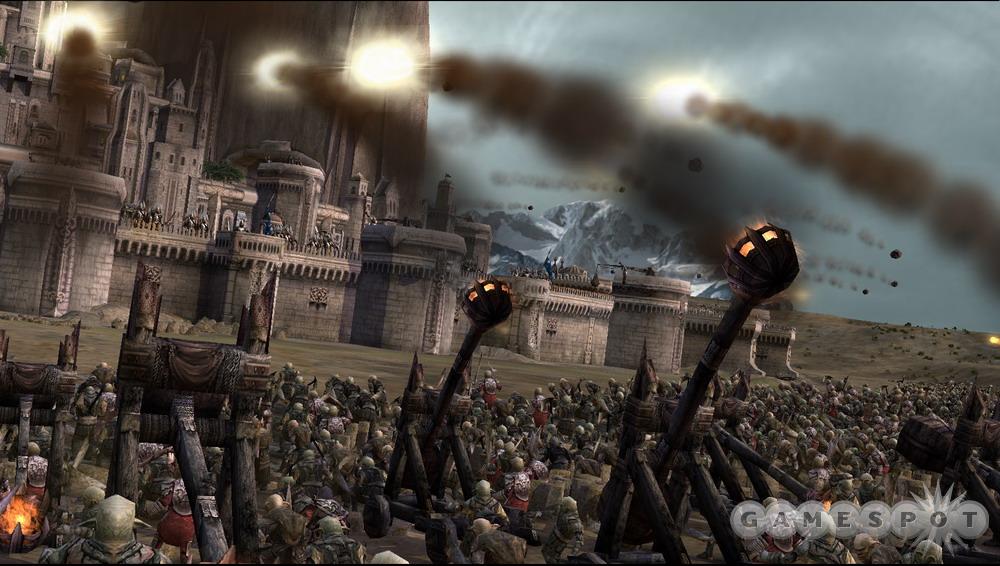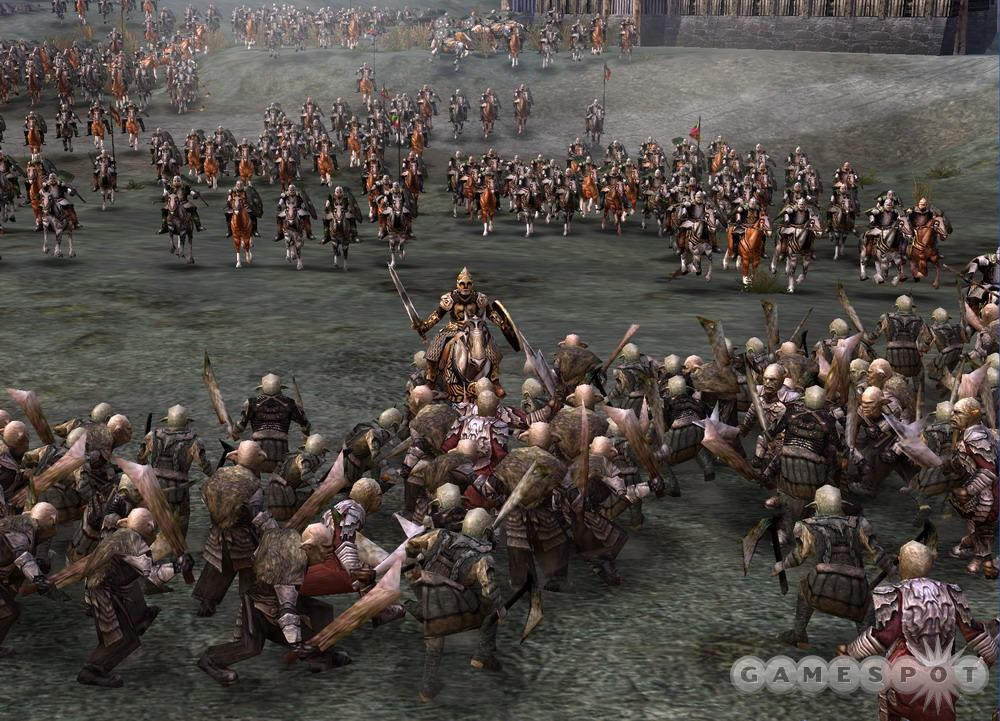The Lord of the Rings, The Battle for Middle-earth Designer Diary #2
In this edition of GameSpot's designer diaries, the art director for The Battle for Middle-Earth explains how they're shaping the world of the game.
The Lord of the Rings: The Battle for Middle-Earth is one of the most anticipated real-time strategy games on the PC this year. Based on the blockbuster movie trilogy, The Battle for Middle-Earth will let you command either the forces of good or evil for domination of Middle-earth. You'll have the chance to lead four factions, including the riders of Rohan and the armies of Gondor, as well as the armies of Isengard and the legions of Mordor. The game is being developed by the same team that worked on Command & Conquer: Generals, but as art director Richard Kriegler explains, they're doing a lot of work to ensure that the game and the battles capture the same epic size and feel as the movie, The Lord of the Rings: The Return of the King.
Shaping Middle-Earth
Richard KrieglerArt Director, EA Los Angeles
As an art director I literally shape the world of Middle-earth in the game. From day to day, I direct the art team, giving them ideas, helping them perform tasks, and making sure their work is as exceptional as the game is striving to be. I also personally do a lot of artwork myself.

To give you an idea of what I do, I'll explain the steps I took to create some of the buildings in our game version of Gondor. I start first by sketching out the buildings and then getting approval of those sketches. Sometimes I'll use textures from other buildings and then go to an artist to develop them, watching to make sure the proportions are correct as we build the 3D geometry. Then, as the texture is set, I'll help the artist paint it so I can be sure there is a certain level of realism in the texture. At that point, we've brought the buildings from concept to finish.
It's a little different for the characters in the game because we are using the figures created for last year's game, The Lord of the Rings: The Return of the King. What we do in that scenario is take the figures that already exist and repaint the textures to help them look better on the screen. It's all about getting the textures to read on the screen really well. It takes a lot of discipline to do this. Oftentimes we find ourselves painting figures over and over throughout the production of the game to ensure that they look their very best. We do this because, as we move on through the year, we are constantly improving our skill, which means we have to go back and repaint our old work to match the same level of quality.
I was originally hired to work on Command & Conquer: Generals. When I came to the game industry they had a certain style--what we now call an "old-world" style--to the art in real-time strategy games. This style was characterized by graphics that were candy-colored and heavily outlined in black. This style is very far from realism. So I was asked, with my background in the movie industry, to make the game look more real. I took all the graphic candy colors off, took the heavy outlines off, and slimmed the outlines down to the bare essentials. This imparted to Generals a certain degree of realism that was unusual for real-time strategy games.

In The Battle for Middle-Earth, I wanted to take that realism a step further. The biggest difference is that The Battle for Middle-Earth will have more pixels on the screen. Generals shipped at 800 pixels; The Battle for Middle-Earth will ship at 1,024 pixels. Plus, we've also used many of the same techniques we used on Generals, such as pulling the camera back and making our figures larger so there is more area to paint. As a result, The Battle for Middle-Earth has a hundred times more realistic figures and buildings than Generals did.
That's about it for me. Thank you for your interest in The Battle for Middle-Earth. Stay tuned for the next designer diary!
Got a news tip or want to contact us directly? Email news@gamespot.com
Join the conversation